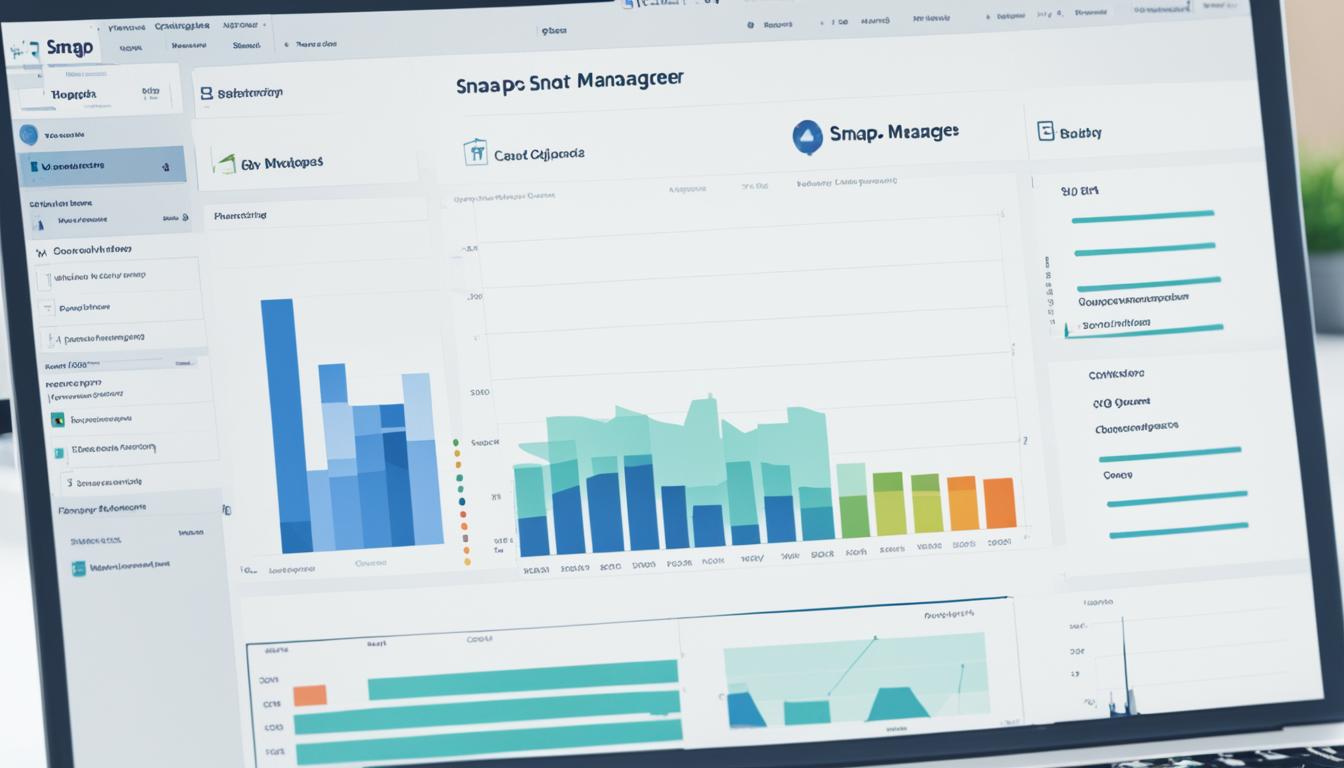In today’s fast-paced business environment, operational efficiency is crucial for companies looking to stay competitive. One area that often gets overlooked is document workflow and its impact on operational efficiency. In this section, we will explore the importance of operational efficiency, the role of document workflow in achieving it, and how Snap Business Manager can help streamline operations for seamless management.
Key Takeaways:
- Snap Business Manager offers a comprehensive solution for seamless management.
- Document workflow plays a crucial role in operational efficiency.
- Streamlined operations lead to improved productivity and competitiveness.
- Snap Business Manager provides a range of tools for social media management, advertising, and marketing.
- Efficient document workflow leads to time savings, reduced errors, and enhanced collaboration.
Understanding Operational Efficiency and Its Role in Business
Operational efficiency is a vital aspect of business success. It refers to a company’s ability to optimize its resources and processes to achieve maximum productivity. This optimization includes various components such as resource allocation, standardized processes, automation and technology, data-driven decision-making, and ongoing improvement.
Resource allocation is the strategic allocation of resources, including time, budget, and personnel, to achieve optimal results. By effectively allocating resources, businesses can minimize waste and maximize productivity, ensuring that each resource is utilized to its fullest potential.
Standardized processes involve developing and implementing consistent procedures and guidelines across the organization. These processes help eliminate variations and inefficiencies, streamlining operations and ensuring consistent quality throughout the business.
Automation and technology play a crucial role in operational efficiency. By leveraging automation tools and adopting technological solutions, businesses can reduce manual effort, minimize errors, and improve overall efficiency. Automation and technology also facilitate streamlined workflows, enabling seamless communication and collaboration among team members.
Data-driven decision-making involves collecting and analyzing relevant data to inform business decisions. By basing decisions on accurate and up-to-date data, businesses can make informed choices that drive efficiency and improve overall performance. Data-driven decision-making also allows for proactive identification of areas for improvement and helps prioritize ongoing improvement efforts.
Ongoing improvement is crucial for maintaining and enhancing operational efficiency. By continuously evaluating processes, identifying areas for enhancement, and implementing improvements, businesses can adapt to changing market conditions and stay ahead of the competition.
“Operational efficiency is not a one-time achievement; it requires ongoing evaluation and improvement to stay competitive in today’s dynamic business landscape.” – John Johnson, CEO of Efficiency Inc.
To sum up, operational efficiency is essential for businesses to deliver products and services quickly, adapt to market conditions, and improve overall performance. Resource allocation, standardized processes, automation and technology, data-driven decision-making, and ongoing improvement are all key components of operational efficiency. By effectively implementing and integrating these components, businesses can optimize their operations and achieve seamless management.
The Importance of Document Workflow for Operational Efficiency
Document workflow is a critical component of achieving operational efficiency within a business. By implementing an effective document workflow system, companies can experience significant improvements in various areas, leading to increased productivity and streamlined operations.
One of the key benefits of a streamlined document workflow is the significant time savings it provides. By eliminating unnecessary steps, automating processes, and reducing manual effort, employees can focus on high-value tasks, leading to increased productivity and efficient use of resources.
Moreover, an optimized document workflow promotes improved collaboration among team members. With a well-structured process in place, employees can easily access and share documents, collaborate in real-time, and provide feedback, leading to faster decision-making and improved project outcomes.
Reducing errors is another crucial aspect of document workflow. By implementing standardized procedures and utilizing digital tools, companies can minimize human errors and ensure accuracy in document creation, editing, and distribution. This helps prevent costly mistakes, enhances overall quality, and maintains a positive brand reputation.
Enhanced security and compliance are also key benefits of a robust document workflow system. By implementing proper security measures and maintaining compliance with relevant regulations, businesses can safeguard sensitive information, protect customer data, and mitigate potential risks. This not only ensures data privacy but also fosters trust and confidence among customers, leading to increased satisfaction and loyalty.
Effective document workflow management also contributes to improved risk management. By maintaining a centralized system for document storage, version control, and access permissions, companies can reduce the risk of unauthorized access, data breaches, and compliance violations. This enables proactive risk mitigation and supports a culture of accountability and transparency.
Furthermore, streamlined document workflow facilitates effective knowledge management. By organizing and categorizing documents in a structured manner, employees can easily locate and retrieve information, enabling faster decision-making and efficient knowledge sharing. This promotes continuous learning, innovation, and overall business growth.
Overall, implementing an efficient document workflow system has a profound impact on operational efficiency. It saves time, improves collaboration, reduces errors, enhances security and compliance, increases customer satisfaction, supports risk management, ensures transparency and accountability, and promotes effective knowledge management. By embracing digital tools such as Snap Business Manager, businesses can optimize document workflow and achieve seamless management of their operations, leading to improved productivity, cost-effectiveness, and ultimately, business success.

Strategies for Streamlining Document Workflow with Snap Business Manager
When it comes to enhancing operational efficiency through streamlined document workflow, companies can employ various strategies to optimize their processes and achieve seamless management. With the help of Snap Business Manager, a powerful business solution, organizations can maximize their productivity and efficiency levels.
One strategy is the implementation of digital solutions. By digitizing their document workflows, companies can reduce manual effort, minimize errors, and ensure faster processing times. With Snap Business Manager, businesses can easily convert physical documents into digital formats, enabling smooth collaboration and improved accessibility.
Another effective strategy is the adoption of automated processes. By automating repetitive tasks and workflows, companies can save time and resources, enabling employees to focus on more strategic and value-added activities. Snap Business Manager offers advanced automation features that streamline document workflows and minimize human intervention, resulting in increased efficiency and productivity.
Measuring the impact of document workflow improvements is crucial to track progress and identify areas for further optimization. Key Performance Indicators (KPIs) play a significant role in this process. Snap Business Manager provides robust analytics and reporting capabilities, allowing companies to monitor and measure the impact of streamlined document workflows in real-time. By utilizing these insights, organizations can make data-driven decisions and continuously improve their operational efficiency.
Implementing these strategies, digital solutions, automated processes, and measuring the impact using key performance indicators, with Snap Business Manager can help companies optimize their document workflows and achieve seamless management. By streamlining their operations, businesses can improve efficiency, reduce costs, and ultimately deliver better results.

Conclusion
In conclusion, operational efficiency is crucial for the success of any business. It allows companies to optimize their resources, streamline processes, and deliver products and services more effectively. A key factor in achieving operational efficiency is a well-designed document workflow that reduces manual effort, improves collaboration, and ensures compliance.
Snap Business Manager offers a comprehensive solution for streamlining document workflow and facilitating seamless management. With its advanced features and automation capabilities, businesses can achieve greater operational efficiency and enhance overall productivity. By implementing strategies for streamlining document workflow and leveraging the power of Snap Business Manager, companies can optimize their operations and achieve seamless management of their business processes.
From time savings and reduced errors to enhanced security and customer satisfaction, document workflow plays a significant role in driving operational efficiency. Snap Business Manager enables businesses to streamline their document workflow, automate tasks, and measure the impact using key performance indicators. By embracing digital solutions and leveraging the capabilities of Snap Business Manager, companies can unlock the potential for improved efficiency and seamless management of their operations.




No comments! Be the first commenter?